
Table of Contents
1. What is a digital head end?
2. Digital Head-end connects with the different transmission systems
2.2 What is a headend in cable tv?
2.3 What is a headend in terrestrial wireless television systems?
3. How to use only one device as an entire Headend system?
4. What is the main advantage of a digital headend over an analog headend?
A digital headend is a central device responsible for receiving, processing, and distributing various television signals in a digital format. Headends play a pivotal role in the operation and maintenance of digital television broadcasting systems, ensuring the seamless delivery of video and audio content to the viewers.
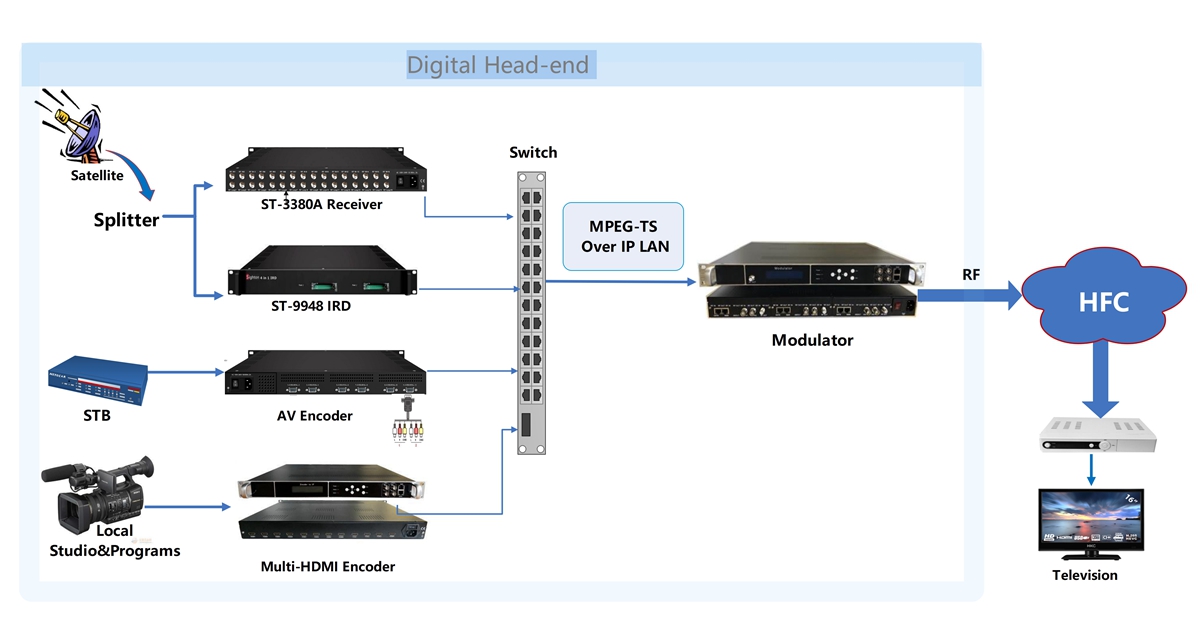
Digital headends work by receiving signals from multiple sources such as satellite feeds, local broadcasts, and even pre-recorded content. These signals are then converted into a digital format, if necessary, and processed for error correction, encryption, and compression. This process often includes converting the received video into MPEG-2 or MPEG-4 standards, allowing for efficient transmission over various platforms.
Once the signals are processed, the digital headend combines them into a single transport stream. This stream is then encrypted to protect copyrighted content and ensure authorized viewership. Furthermore, the headend may add custom messages, subtitles, and other metadata to the content to enhance the user experience.
The next step a digital headend takes is to distribute the processed content to the desired platforms, such as cable, satellite, or IPTV networks. This distribution typically involves modulating the digital signals onto radio frequencies or streaming them over IP networks. In some cases, the headend may also remove local advertisements and replace them with targeted ads for a specific audience.
Gateway receivers mainly receive free signals from satellites.
Or use an IRD receiver (with CAM slot and smart card) to receive high-definition channels and decrypt them from satellites.

In addition, it also supports receiving terrestrial wireless digital television signal sources from DVB-T/T2, or ISDB-T, ATSC-T and DVB-C cable system signal sources.
Encoders are vital components in a digital headend system. They convert audio and video signals into digital format, allowing for efficient compression and transmission. Different types of encoders cater to various digital video formats, such as MPEG-2, MPEG-4, and H.264.
After receiving and encoding, the signal is connected to a modulator for modulation and output RF signal. Based on different transmission systems, the modulation standards of the modulator are also different, like DVB-T/T2, ATSC, ISDB, DVB-C, DVB-S/S2, and DMB-T.
There are other devices used in the digital front-end system, but they are all based on the development of the above three devices. For example, encoder-modulator all-in-one, Tuner to modulator, and transcoder for protocols conversion, etc.

The head-end in IPTV is mainly composed of a gateway receiver or a multi-channel encoder, which differs from other digital TV systems in that it does not require using any modulator.
The output of the IPTV head-end is an IP stream, which is directly connected to the IPTV server or switch with a network cable, and is transmitted based on the internet or LAN.
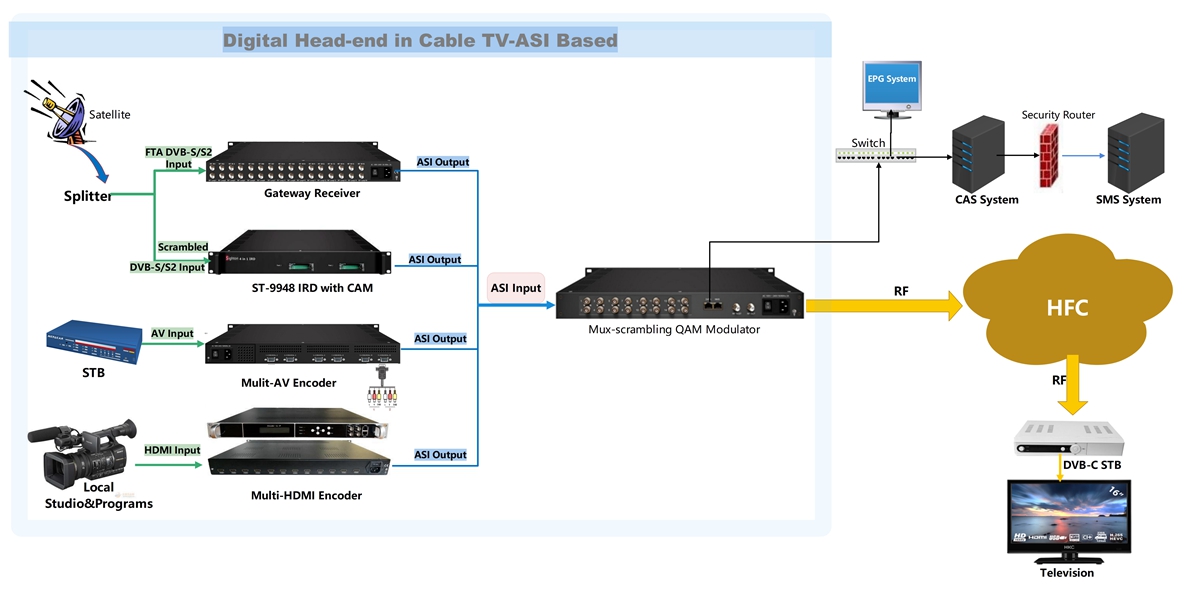
The head-end in cable TV systems consists of encoders, gateway receivers, multiplexers, a scrambler and QAM modulators. They are connected via ASI cable as the above picture shows.
Or connected via network cable, like the following:
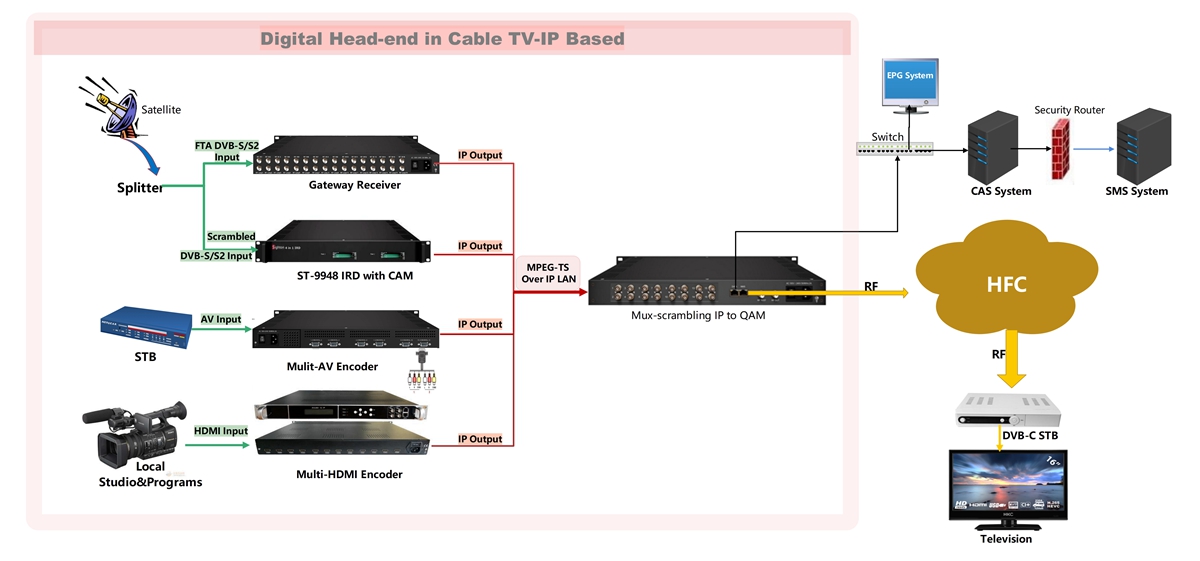
Let's focus on IP QAM, which is currently the most widely used modulator on the market.
What is the difference between an IP QAM modulator and a common modulator? Under what circumstances do you need to use the IP QAM modulator?
There is not much difference. The advantage of IPQAM lies in a large number of channels and high integration. like this 64 in 1 IP QAM, supports a maximum of 512 channels of output.
Processing multiple programs has a price advantage, and is also convenient for management and configuration.
There is no special requirement, generally, such IP QAM is used.
For the wireless terrestrial transmission system headend, it still needs encoders and gateway receivers. As the user obtains the signal via the transmitter, which has higher requirements on the modulator.
For space signal networks, it requires SFN(Single frequency network). And IP QAM(with many RF carriers) cannot meet the requirements. Because the clock precision required by the network is very high.
Generally, the single-frequency modulators need to be connected to an external clock to synchronize the signal. Pre-distortion is also needed to improve the signal index.
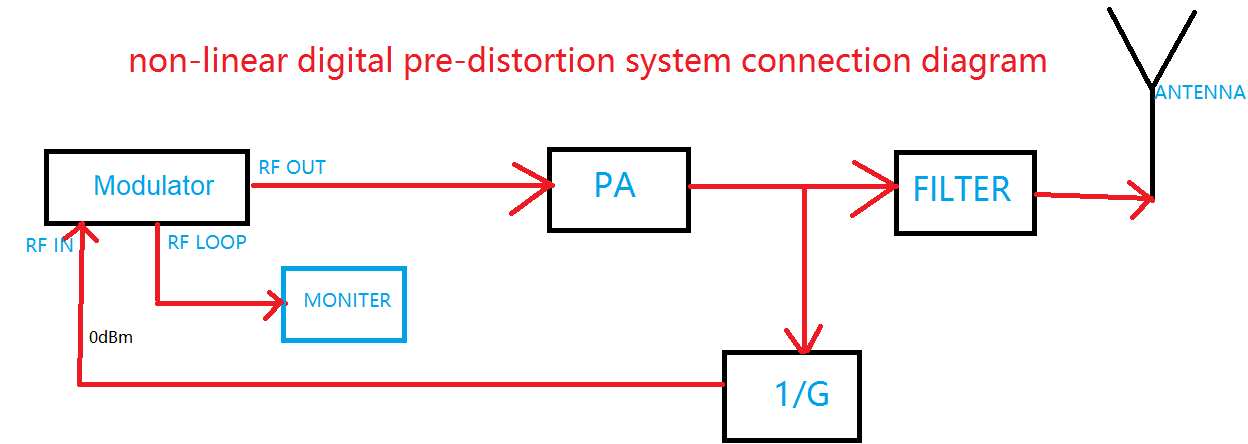
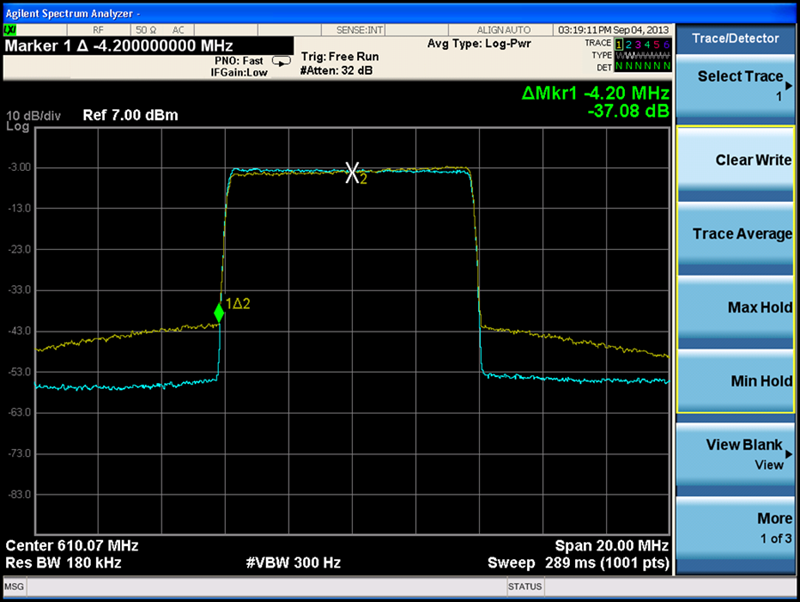
And required a Constant temperature crystal oscillator, as high as 0.1ppm stability
Based on the above higher requirements, the cost of this single-frequency modulator is expensive.
Sometimes people just want a device as the front-end system, we use one unit DTV Head-end Processor. This 1-U case comes with 3~6 independent module slots. Each module can be configured individually based on the applications including encoding, decoding, trans-coding, multiplexing, descrambling, and modulating processing and the combination of all these functions. It supports multiple input and output interfaces and signal formats.

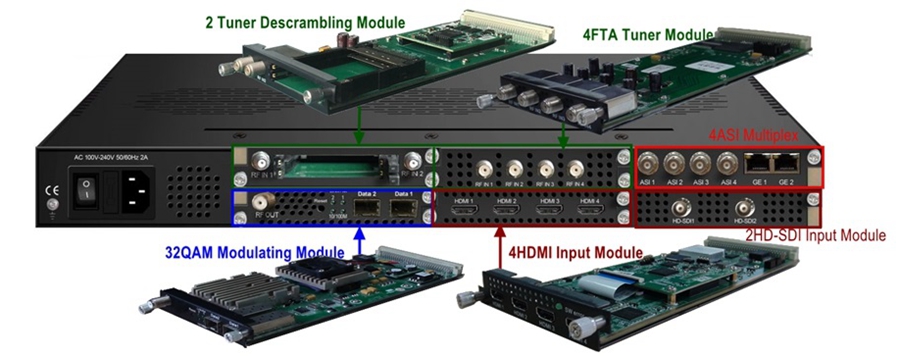
A front-end system requires only one device. The advantage is that it takes up less space in the machine room, the cable connection is simple, and its performance is as stable and good as that of independent devices.It is also very flexible, we can match different modules according to the needs.
The disadvantage is that it has high requirements for heat dissipation, and the price is relatively expensive.
Analog headends were known for receiving and processing satellite or terrestrial TV signals before distributing them to cable subscribers. They used traditional methods such as signal amplification and frequency conversion, which led to a higher potential for signal degradation and a limited number of channels. The picture and sound quality in analog headends were also not on par with today's high-definition (HD) standards.
1). Digital headends offer broadcasters a means of distributing high-quality, data-compressed content.
This new technology has several advantages over its predecessor, such as increased channel capacity, better signal quality, and the ability to transmit HD and even ultra-high-definition (UHD) content. Digital headends use digital processing techniques, including multiplexing and digital modulation, which result in an efficient and reliable distribution of content.
2). Multiple channels to be transmitted in a single digital stream
The transition from analog to digital headends involves the replacement or upgrading of several components. Firstly, digital modulators are introduced to the system, performing digitization of incoming signals and generating a digital output. Additionally, digital encoders are required to compress video and audio content, reducing the amount of data transmitted without sacrificing quality. This compressed data is then recombined or multiplexed, allowing multiple channels to be transmitted in a single digital stream.
3). Digital headends also call for an advanced level of monitoring and control, compared to analog ones.
Network management software and digital video monitoring systems are crucial to ensure the smooth operation of the digital headend infrastructure. These tools allow operators to remotely manage and troubleshoot issues, resulting in improved performance and reliability of the system.
In summary, the transition from analog to digital headends has been a necessary step for the broadcasting industry, as it strives to keep up with the increasing standards in quality and efficiency. The many advantages of digital technology, such as enhanced signal quality, increased channel capacity, and support for HD and UHD content, make it the obvious choice for current and future broadcasting needs.